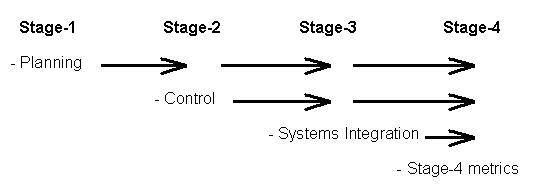|
| Plant Maintenance Resource Center
World Class Maintenance Strategy Design Techniques
| |
|
|
|
|
|
World Class Maintenance Strategy Design Techniques
INTRODUCTIONA goal is created three times. First as a mental picture. Second, when written down to add clarity and dimension. And third, when you take action towards its achievement. - Gary Ryan Blair This article covers two major techniques for designing World-Class maintenance strategies. The advantages and disadvantages of each technique are briefly discussed and a framework combining both techniques is recommended. Key to the development of the maintenance strategy is the involvement of the maintenance employees, as well as their customers. The recommendations made in this article are not presented as an infallible recipe, but on the basis of the principle that any framework is better than no framework. Where should we start?You need to have some idea at the outset of where you are going if you are to have any chance at all of getting there. At the outset of several presentations I have posed the following question to members of the audience:"What is the one, critical, and most important job that the maintenance personnel have to do?" Answers ranged from reducing downtime and/or maintenance costs, to: "Ensuring that you are never to blame for the problem!" The maintenance personnel of this millennium have one job that is of critical importance, and that is the implementation of the company's maintenance strategy. Moreover, they are the only ones that can perform this job. If there is no maintenance strategy, it must be focused on as first priority. Should the plant engineer wait for someone else to do it for him, he is going to wait for a very long time. His job is not to fix problems through technical brilliance, but to prevent those problems from occurring in the first place. This he can only do through a well-designed maintenance strategy. (So, what's new?) Why do we strategize?A maintenance strategy provides, inter-alia:
Maintenance Strategy Development TechniquesThere are some major (generic) elements that are common to all strategy designs, because they are essentially linked to maintenance maturity indexing. These elements will affect your maintenance performance, irrespective of whichever strategy you pursue. They are listed here below, corresponding to the maturity stage where they start to have maximum relevance:
Planning, the key to stage-1 progress, does not stop after stage-1, but must be maintained and enhanced right through to stage-4. If you do not improve your planning you cannot leave stage-1. That's it, bottom-line. Proper control can only be achieved in stage 2, by definition. This happens when:
Congruency, or systems integration, is the major key to stage-3 progress. (It is not the only key either) It is impossible to achieve effective (permanent) congruency, if good planning and control systems have not been established, and this cooperation must extend beyond the boundaries of the maintenance function. A CMMS is not an instant solution to the congruency dilemma. The metrics of stage-4 is difficult to define due to the fact that it cannot be researched to any significant extent. Few organizations have reached this stage, and those that did are not always keen to share their strategies. Trust, teamwork and cooperation seem to be some of its attributes, but the foundation for these aspects has to be laid long before an organization reaches stage-4. If this has not been done you will not reach stage-4. A very interesting fact is that these four maturity stages, and their associated keys are just as valid in the marketing, finance and operations environments, as they are in maintenance. A formal maintenance strategy can be developed in either of two ways: These are the "Policy" technique and the "Modeling" technique. The "Policy" TechniqueThis technique consists of a series of policies, written in the form of a narrative, or expounded semi-cohesive principles. They are usually developed to cover the work process, in piecemeal fashion, and are frequently found to be disjointed. Each policy is usually compiled in accordance to some standard prescribed format that fully explains the aspect under consideration. There is usually no shortage of policies in organizations - they seem to proliferate themselves.The major disadvantage of this technique is that it is difficult to pass on, because the reader can only relate that which he reads to his own (limited) constructs. It is also reminiscent of a civil service type of system, which has a rule for every problem. (If you follow the rules, there will be no problems) It is less dynamic than a model and more prone to fall into disuse. Changing circumstances requires frequent policy revisions, which becomes a new job requiring additional resources. Accessibility is another factor. In the writer's recent experience he has seen "policy manuals" jealously guarded in the bookshelves of senior executives, as if only they are privy to the information contained therein. Now, policies, like principles, may not clash. If one applies holistic analysis to the policy method, two valuable new perspectives become apparent. The first is congruency, and the second is contribution. These perspectives are not commonly used in conjunction with policy documents, but have the potential to give major direction to the policy technique, in order to enable an organization to move towards worlds-class performance standards. Congruency between policies is achieved through a system of cross-references. That is, one policy document refers to, or is conditional on, another policy. It is recommended that a special 3-block section be inserted into the header of each written policy, next to the revision date, that contains:
The second perspective that can be used to enhance the impact of the policy technique is that of contribution. This means that every policy must be evaluated (by a nominal group) with regard to the contribution that it specifically makes towards the stakeholders of the company, in terms of what they require:
Two other stakeholders are ignored for the purpose of this analysis: The creditors, and the IRS. A multiplication factor can be calculated similar to the above, or a balanced scorecard technique may be applied to evaluate the total contribution factor of each policy. The last step of this technique would be to calculate the sum total of the congruency factors of all the policies in the department, as well as the sum total of the contribution factors of all the policies. The CEO can now evaluate the congruence and deemed contribution of each department to the whole on the basis of these two figures. It is as simple as that. The Modeling TechniqueA model is usually represented by a one-page cryptic document. It is an attempt to capture in condensed, schematic format, all the relevant variables pertaining to a section of, or to the entire maintenance environment, and is essentially holistic by its very nature.This method enables us to accommodate the complexity of the maintenance process with relative ease. It is properly a strategy analysis technique, and thus resorts under the preparation phase, but is just as effective in the strategy design phase. It has the following major advantages:
The modeling process starts of with a series of questions. These need to be the right questions! If you ask the wrong questions, the probability of getting the right answers are close to zero. An example of a wrong type of question to ask is: "Why are our maintenance costs so high?" The traditional response to this question is to dig up a few high cost items from the last 3 month's expense reports, and to offer a plausible explanation for each. That usually settles the issue (until the next month's variance reports). A better option is to apply Pareto analysis to the high-cost contributors, and to find the root cause of the problems. The best option however, would be to view the maintenance environment as a process, and then to ask the following questions:
It is therefore of crucial importance that the relevance of a model must be defined with relation to maintenance maturity. Different levels of maintenance maturity require different decision criteria and different solution sets. Where do we go from here?The ideal program utilizes both techniques, and focuses on the most expedient method to enhance the understanding and implementation of any particular concept. At the core of the Stage I, and Stage 2 analyses are the qualitative relationships between the variables. This highlights the principles involved in the maintenance process and it cannot be quantitative (except from an holistic viewpoint), simply because the data is not yet available. The modeling technique is therefore best suited to make major progress in the early stages.The Stage 3 and 4 analyses focus on quantitative metrics to a greater extent, and this is the area where advanced researchers can have a field day. The drawback of this type of research is the fact that the majority of manufacturing organizations reside in stage-2 maturity, and therefore cannot benefit directly from this research. The logical sequence of the maintenance strategy process consists of three phases, namely:
The preparation phase is seldom the subject of a separate focus. It main tenets are Research, Audit, Analysis, Marketing and Training. It is not an easy phase, because it presupposes most of the strategy parameters. This anomaly is resolved by performing one or more iterations of the entire process, especially in the case where an organization designs a maintenance strategy from zero base. Several of the aspects of the preparation phase are continuous, and not a once- off exercise. If this phase is neglected, the Implementation Phase just becomes that more difficult, if not impossible. Maintenance Strategy FrameworkPreparation
Strategy Design
Strategy Implementation
ConclusionWhat are the principles that are operational in the maintenance environment?
About the Author: Herman Ellis is an engineer who has worked in a number of organizations in the manufacturing industry in South Africa. He is the owner of Qualitech Management Services, a consulting firm specializing in the implementation of multi-skilling initiatives, entry-level training programmes for artisans and engineers, and maintenance strategy modeling for the purpose of ISO 9002 certification. Herman is currently preparing the proposal for his Ph.D. in maintenance management, and can be contacted at: hermane@megadial.com for more information.
Copyright 1996-2009, The Plant Maintenance Resource Center . All Rights Reserved.
|


